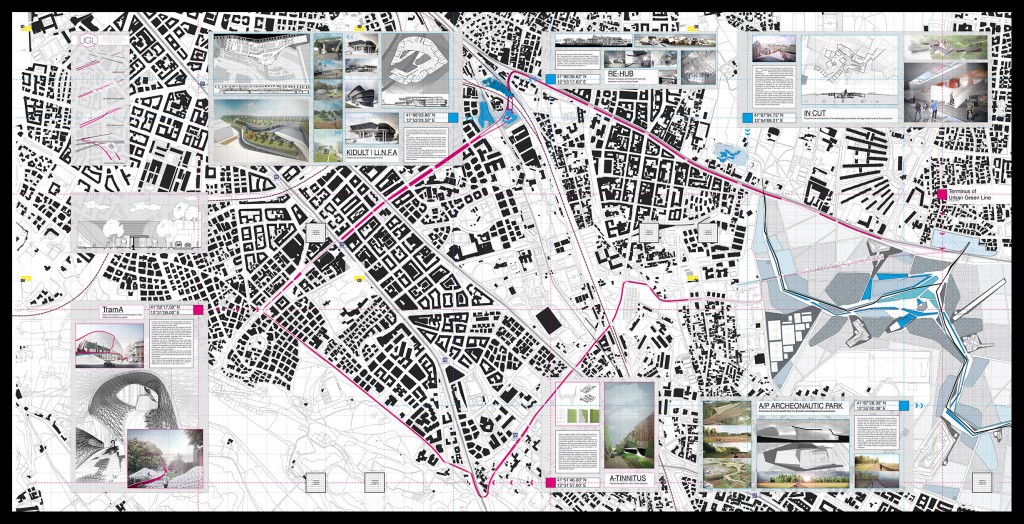Competition Holcim Awards 2013/2014 – Urban Green Line. An Ecological Infrastructure for Rome
Competition Region: Europe
Country: Italy
City: Rome
Category: Next Generation
Intervention: New construction and conversion
Main Author: Saverio Massaro
Further Authors: Rosamaria Faralli, Gaetano De Francesco, Valerio Galeone, Giuseppe D’Emilio, Denise Franzè, Dario Pompei, Liborio Sforza, Antonio De Pasquale, Davide Motta.

PROJECT SUMMARY
UGL is an ecological infrastructure of new generation for the city of Rome.The project adopts a systematic way of promoting the development and the reuse of several urban voids in the southern area of the city. To stop the use of soil, in order to move energy towards the use of the abandoned areas inside the city, we have to create infrastructures!
The UGL is based on 5 principles: Multi-functionality / Systematic Greenery / Information Technology Foam / Living Accessibility / Magic Crisis.
The project involves an urban area occupied by approximetely 150.000 inhabitants.
The tram’s route is made by grass. Is used an active type of asphalt within a de-pollution system. The nanotechnologies are used for paving and covering solutions.
SUSTAINABILITY CONCEPT
Infrastructure has for many years been the primary tool for developing architectural and urban planning. In today’s world full of serious ecological challenges we have to minimize the consumption of agricultural soils, but we cannot block development! We just need to reverse its direction.
PROGRESS
The UGL is not only a tramway, cycling and pedestrian infrastructure, but it is also a green ring and an ecological corridor which acts as a driver. The infrastructure is designed as a multi-tasking vector able to generate and spread out information, helping to enable economic and public space revitalization processes.
PEOPLE
The produced flows thereby generate a living and dynamic network of information that may relate to customizable advertising and entertaining episodes, as well as to environmental monitoring, which can help the overall economy of the system.
PLANET
In the large metropolitan areas the so-called ‘urban spaces’ are the result of unexpected planning, disposals or dramatic deep cuts. The UGL uses a strategy that considers these areas as resources. Besides promoting an efficient use of the land, it applies an environmental compensation by injecting green, naturalness and intelligence in the use of resources. This environmental continuity allows the achievement of multiple objectives.
PROSPERITY
Every second the concrete is eating away 8 sqm (m2) of Italy, generating new brown areas. In Rome 10% of the territory consists of urban voids, which have a considerable “cost” for a community. Thus the projects within the “urban voids” intend to work around this economic and systemic damage, triggering a cyclical process of involvement of public and private actors, able to financially support a step by step construction of the inner ring of the infrastructure.
PROFICIENCY
The UGL defines an urban strategy on the macro scale, by developing periphery-periphery horizontal systems, by connecting crosswise two large green wedges: the Centocelle park and the Caffarella park, by creating a system that merges together mobility, archaeological valorization, fruition and continuity between natural systems. Furthermore the UGL develops at the micro-scale projects bordering and interrelated (urban voids) among them, connected together by the urban planning, functional and morphological point of view. The way they grow is incremental. Each project becomes a previous context for the next one, by affecting it in all its aspects.








